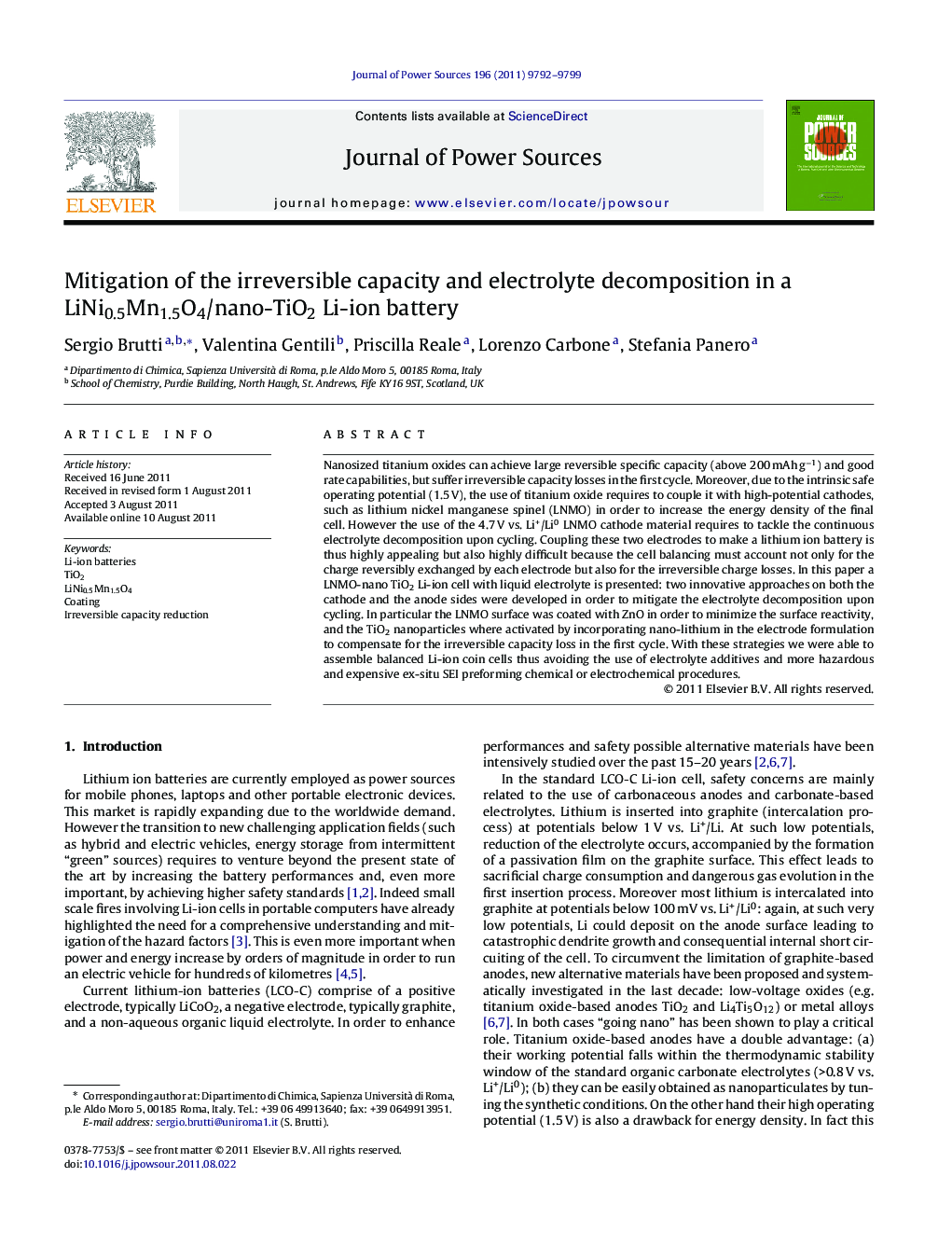| Article ID | Journal | Published Year | Pages | File Type |
|---|---|---|---|---|
| 1284741 | Journal of Power Sources | 2011 | 8 Pages |
Nanosized titanium oxides can achieve large reversible specific capacity (above 200 mAh g−1) and good rate capabilities, but suffer irreversible capacity losses in the first cycle. Moreover, due to the intrinsic safe operating potential (1.5 V), the use of titanium oxide requires to couple it with high-potential cathodes, such as lithium nickel manganese spinel (LNMO) in order to increase the energy density of the final cell. However the use of the 4.7 V vs. Li+/Li0 LNMO cathode material requires to tackle the continuous electrolyte decomposition upon cycling. Coupling these two electrodes to make a lithium ion battery is thus highly appealing but also highly difficult because the cell balancing must account not only for the charge reversibly exchanged by each electrode but also for the irreversible charge losses. In this paper a LNMO-nano TiO2 Li-ion cell with liquid electrolyte is presented: two innovative approaches on both the cathode and the anode sides were developed in order to mitigate the electrolyte decomposition upon cycling. In particular the LNMO surface was coated with ZnO in order to minimize the surface reactivity, and the TiO2 nanoparticles where activated by incorporating nano-lithium in the electrode formulation to compensate for the irreversible capacity loss in the first cycle. With these strategies we were able to assemble balanced Li-ion coin cells thus avoiding the use of electrolyte additives and more hazardous and expensive ex-situ SEI preforming chemical or electrochemical procedures.
► In this study we presented an innovative formulation for a complete Li-ion cell. ► Nanosized TiO2-based anode and a ZnO coated LNMO were coupled with LP30 electrolyte. ► Li-ion coin cells were assembled without the use of additives/pre-activations.
